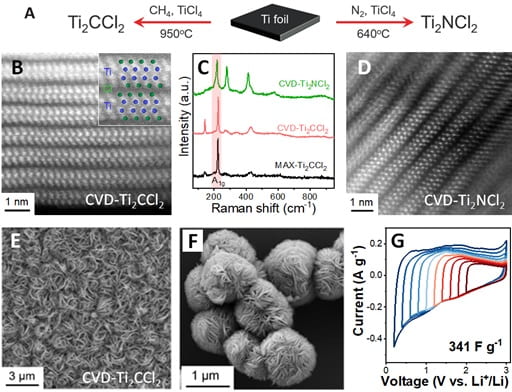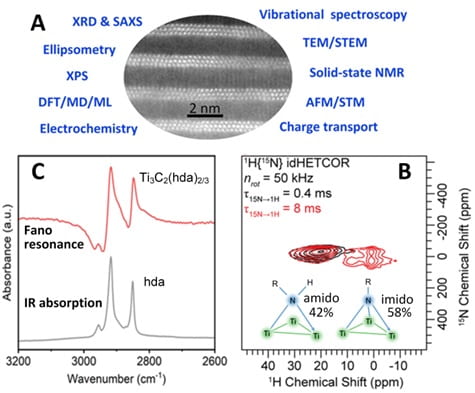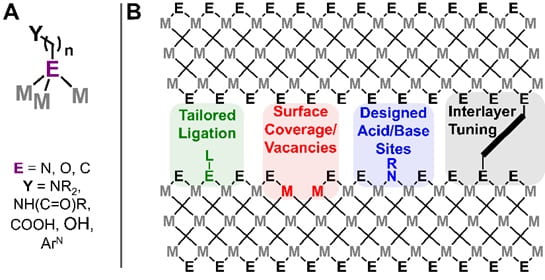Objectives of M-STAR
M-STAR will address scientific questions pertinent to synthetic chemistry of MXenes, specifically the ability to synthesize MXene compounds by methods other than by etching MAX phases, control of MXene lateral dimensions and surface terminations, and methods for the synthesis of hybrid organic-inorganic MXenes with covalently bounded organic and inorganic components. Direct methods for the synthesis of MXenes include new solid-state and solid-gas reactions, chemical vapor deposition, and salt-assisted templating. In characterizing basic properties of their surfaces and edges, we will establish methods for the synthetic control of MXene sheet size. Finally, hybrid organic-inorganic MXenes (h-MXenes) show great potential to unite the tailorability of organic molecules with the unique electronic properties of inorganic 2D solids. We envision a modular and flexible series of MXene materials based on a list of synthetically accessible and thoroughly investigated MXene compounds.


M-STAR will investigate and rationalize the connections of structure and composition of MXene organic and inorganic constituents to their physical and chemical properties. MXenes represent an ideal platform for integrated experimental and computational studies of complex interfaces in functional materials. Structural flexibility in MXene 2D inorganic layers, covalently-bound surface ligands, and (in)organic ions electrostatically intercalated between 2D sheets create a chemical design space surpassing that of any other 2D material. We will develop a multipronged methodology for characterization of hybrid organic-inorganic MXenes, investigate MXenes as hyperbolic metamaterials; and establish MXenes as tunable and adaptable metamaterials by chemical design.
M-STAR is particularly interested in impactful reactions, with a focus on chemical transformations central to a sustainable carbon-neutral economy, such as hydrogen storage and evolution, reduction or oxidation of ubiquitous feedstocks such as CO2, N2, CO, CH4, and other hydrocarbons into valuable products, as well as large scale industrial transformations of commodity chemicals. Our goal is to understand how the synthetic methodology developments and structure-function relationships above underpin the reactivity and catalytic properties of MXenes. We propose that while charges and energy can be efficiently shuttled within the carbide or nitride 2D layer, the surface groups can be precisely tuned to deliver the desired reactivity. Importantly, molecular modification of MXene surfaces will enable unique atomistic control over catalytic microenvironments and reactivity.

